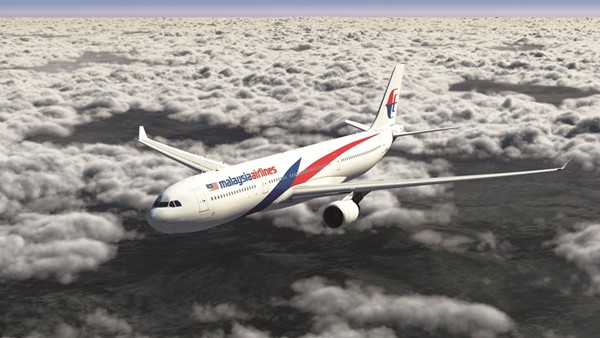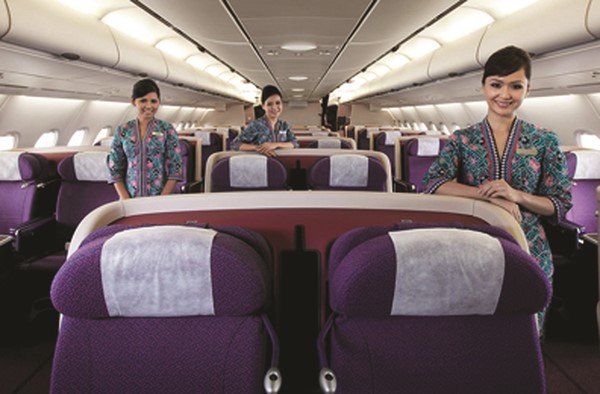Brand profile: Malaysia Airlines

With wreckage from the MH370 disappearance beginning to surface, Emily Andrews investigates whether or not the beleauered Malaysian flagbearer can regain its former good standing
Sometimes, external influences with the potential to wreak havoc on a brand’s reputation are unavoidable. In this situation, even the most highly-skilled communicator or reputation
manager is limited in what they can do to prevent their organisation from unwanted public and media attention. Natural disasters, wars, humanitarian crises and freak accidents are among those that can create a ripple of destruction with the potential to damage a brand’s reputation in the long term.
One brand that has undergone more than its fair share of bad luck recently is Malaysia Airlines. Following the disappearance of MH370 and the shooting down of MH17, and the many lives lost as a consequence, the airline is now in a position where it must carefully choose which direction to take as it moves forward. Malaysia Airlines initially came under criticism for the way that it handled the MH37 incident. Though its response to MH17 was much better advised, it cannot afford to make any more mistakes in its brand communications.
Malaysia Airlines has recently announced its intention to rebrand, giving some the impression that the company is trying to whitewash over its past. After losing a significant amount of business (the CEO recently described the company as, "Technically bankrupt") following the two tragedies in six months, the airline is ultimately hoping to reach new investors who will help it to rebuild and who will restore faith in the company.
Even prior to the tragedies of 2014, the Malaysia Airlines brand was suffering. it is now planning to build an entirely new brand strategy from the ground up. Spearheaded by the company's new CEO, Christoph Mueller – who has experience reinvigorating airlines such as Aer Lingus, Sabena and Lufthansa – Malaysia Airlines will lose around 6,000 of its current employees as part of its new strategy. Global PR firm Ketchum, which was drafted in to handle strategic comms when MH370 went missing, will continue to support the airline throughout its rebrand. UK-based travel PR expert PCC, which has been working with Malaysia Airlines since 2012 will also remain with the brand. Even in 2012, Malaysia Airlines was suffering losses, and, as a consequence, it was asked to submit a five year plan to the Malaysian government.

Before the global disasters, Malaysia’s poor performance was widely attributed to poor management and an influx of low-cost competition. However, whatever the airline’s faults before 2014, there is no accounting for the circumstances that landed it in tits current position. The disappearance and the missile shooting were undeniably unfortunate circumstances, with the loss of human lives as the overwhelming tragic outcome. With regards to the MH17 incident – the airline could have avoided flying over the Ukrainian war zone – but other airlines were also taking the same route, and, as Hugh Dunleavy, Malaysia Airlines’ commercial director, was keen to point out in the Sunday Telegraph, a central international body should determine safe flight paths, not the airlines themselves.
One year on from the MH17 tragedy, Malaysia Airlines has announced that it will be making significant changes to its brand. Above and beyond this, Malaysia Airlines has also nominated itself as a spokesperson for the airline industry. It is calling for a single global body to monitor threats an decide where civilian aircraft are safe to fly. Malaysia Airlines is also working with Qantas to encourage International Civil Aviation Organisation (ICAO) to impose tracking on all flights. Chris McLaughlin, senior vice president at Inmarsat plc, who provide communications to ships at sea and aircraft in the air, and whose system was on-board MH370, says, “The systems on-board MH370 had been selected by the airline due to the fact that it is not currently a requirement, under ICAO, to track commercial airliners when they’re in operation.” The earlier generation Inmarsat system, used by many different airlines, did not include GPS or tracking capabilities, but new satellites will have a major contribution to aeronautical and passenger connectivity and tracking. McLaughlin says, “Along with Qantas, Malaysia Airlines is at the forefront of adopting aircraft tracking. ICAO, after 18 months of debate, has adopted Inmarsat’s offer of free tracking every 15 minutes. So we’re now at the heart of moves to track aircraft.”
By placing itself at the forefront of new regulations, Malaysia Airlines is making a deliberate effort to associate its brand with safety, a quality that is essential for airline brands and one which Malaysia Airlines lost association with after the twin disasters.
Paul Argenti, professor at Dartmouth’s Tuck business school, said in an interview with the Financial Times, that he believes it might now be too late for a rebrand. In 1997, a ValuJet, US regional carrier crashed in the Everglades shortly after taking off from Miami, killing all 110 people on board. A year later, the company merged with AirTran Airways and lost the ValuJet name. It has since regained its former success and was acquired by Southwest Airlines in 2010. However, Argenti believes that the success of ValuJet in moving on from the tragedy was made possible by the regional nature of the event. In contrast, the Malaysia Airlines disasters were of a global nature and garnered media attention worldwide due to their unusual circumstances. The world won’t forget what happened in a hurry, particularly in the Asian market that makes up the majority of Malaysia Airline’s audience, where superstitions tend to play more of a significant role than in Western culture.

“ALONG WITH QANTAS, MALAYSIA AIRLINES IS AT THE FOREFRONT OF ADOPTING AIRCRAFT TRACKING. SO WE’RE NOW AT THE HEART OF MOVES TO TRACK AIRCRAFT”
In an eerily similar tragedy in 1983, Korean Air Lines was shot down by Soviet fighter jets after inadvertently straying into Soviet airspace and the 269 people on board were killed. Korea’s national carrier altered its name to Korean Air and underwent an extensive design overhaul across aircraft livery. The disaster, heavily covered in global media, was tied up with Korean Air Line’s old red, white and blue design, and the rebrand helped it to, eventually, escape those associations. Shashank Nigam, CEO of SimpliFlying, an aviation marketing strategy firm that works with airlines including Lufthansa and Emirates, told International Business Times, “Korean Air managed to completely refigure brand perception, and, 20 years on, it is rated as one of the best in the world, right up there with Singapore Airlines.”
In another incident; a deadly crash in 1985 that killed 520 people, Japan Airlines rebranded its planes, scrapping the existing tsurumaru crane logo. However, it transpired that the public wanted the tsurumaru logo to stay, and it was reinstated in 2011. Though past incidences may appear to provide a lesson in what works for brands, it depends on the individual situation and on the brand in question. Malaysia Airlines will have to identify what its customers and stakeholders want before it pursues any changes.
For its rebrand to be a success, Malaysia Airlines will also need to communicate that it has fundamentally changed, particularly with regards to policy affecting safety issues. This, combined with the passing of time and ongoing reassurance, will provide Malaysia Airlines with the best chance of a new beginning. The incident will not be forgotten, but the brand may be able to rebuild trust over time, and a rebrand could help speed up that process.
Despite its financial trouble, Malaysia Airlines did have brand equity before the disaster. In 2013 it took 14th place in the Skytrax Global Airline Rankings, an accolade that recognised its service skills. As a national carrier, it also has a long history, dating back to 1947, and therefore has the Malaysian public behind it. The reputation of Malaysia as a desirable destination – in 2014, Malaysia recorded over 27m tourist arrivals, a growth of 6.7% compared to 2013 – could also go some way towards helping the brand get back on its feet again.
Before 2014, Malaysia Airlines was actually beginning to rebrand its fleet and had changed the livery on some of planes to feature an updated logo (although the MH370 and MH17 aircrafts had not yet undergone the change). However, any future rebrand will have to begin with strategic, rather than cosmetic, changes. The airline seems to be on the right path with its efforts to change industry-wide policy and by positioning itself as an agent for greater safety. It is only by demonstrating an authentic restructuring of brand strategy that Malaysia Airlines will be able to attract the investment it so desperately needs to rebuild its business.


